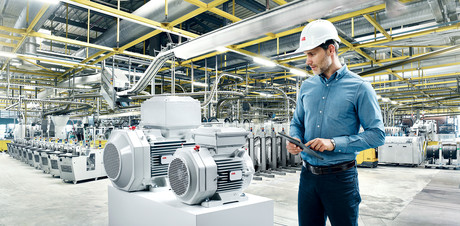The benefits of saving energy for manufacturers

Food and drink manufacturers alone account for over 5% of industrial energy use globally and around 14% of energy consumption within the Australian manufacturing industry. So how can plant manufacturers improve energy efficiency in their plant, while saving costs and improving overall equipment effectiveness (OEE) at the same time?
It will come as no surprise that large companies are under pressure to reduce their energy usage. The Australian Government Department of the Environment and Energy (DoEE) gives tips on energy management and demonstrates best practice for Australian companies through its site Energy EXchange. The Australasian Emissions Reduction Summit 2018, run by the DoEE, recently engaged many high-profile businesses, highlighting that Australia needs to improve its performance with regards to reducing its carbon emissions.
While many plant managers will no doubt be happy to play their part in such initiatives, they are often under pressure from their management to reduce costs and increase output. The good news is that energy efficiency improvements often pay for themselves while helping increase output and reduce operating costs.
Look at your motors
During an energy assessment of a particular plant, ABB discovered that the plant’s motor maintenance program involved rewinding motors in order to help extend the life of those assets. Some motors were rewound up to five times and as a consequence, the energy efficiency of the rewound motors had fallen. As a result, there was additional loading placed on the transformer. This amounted to a significant amount of wasted energy.
By replacing these motors with higher efficiency IE3 motors, the plant immediately started to save energy. The payback period for the investment in higher efficiency motors was less than two years, which was a vital factor in the plant manager’s decision to invest in the IE3 motors.
The plant has since adjusted its motor maintenance policy to look at replacing older IE2, with higher efficiency IE3 motors, rather than rewinding the old motors.
When considering the purchase of higher efficiency motors, there are various online tools and calculators available that help you understand the payback time for the investment.
Look at your refrigeration
Cooling is a critical function in many food and beverage processes and also one of the largest consumers of energy, as compressors, pumps and fans are often in use extensively throughout the plant. Plant managers can assess how this equipment is performing versus the actual demand, which can help them to home in on potential energy saving opportunities. Refrigeration processes use some of the largest motors found in a food and beverage plant, where ammonia compressors use, on average, a 300-450 kW motor and pumps averaging between 35-55 kW.
Many of our customers often have their own energy efficiency goals to meet. In one plant, by applying variable speed drives on two compressors (450 hp and the other at 350 hp) and improving compressor control, saved up to 30% energy use between the compressors, resulting in an overall plant energy reduction of 4%.
Looking at power quality
With a wide range of motors, drives, compressors and other equipment which is inductive, the overall power factor of the plant may be reduced. The lower the power factor, the less efficiently electricity is used throughout the plant. Utilities may impose extra charges or penalties for poor power quality, so this is an area that plant engineers should take into consideration.
At a bottling plant for one of ABB’s customers in India, we installed a step less reactive power compensation system to provide dynamic reactive power, thereby compensating for unbalanced electrical loading. This improved the power factor from 0.94 to close to unity (1). It also translated to a 10% reduction in their annual electricity spend, with the investment delivering a payback of less than two years.
Plant engineers may also wish to consider using low harmonic variable speed drives as well, which help improve the power quality within the plant.
Plant assessments offer insights
Being able to identify energy saving opportunities across a manufacturing plant can be a complex task. At ABB, we’ve developed a plant assessment service that takes a comprehensive look across a plant, working in conjunction with the plant engineers. Together, conducting walk-throughs and focused workshops, the output is a comprehensive report and improvement plan tailored for that plant.
There are certainly many ways to look for energy savings, and each improvement makes a difference. By having a better awareness of the plant’s energy usage, plant managers can identify key areas where energy is being wasted. Not only will investing in newer, more energy efficient equipment help them to meet government emissions targets, it will also reduce costs in the long term and help them to reduce the cost of downtime.
Originally published here.
Fermentation project upcycles inedible food waste
Swedish food producer Greenfood and biotech company Tekinn have teamed up in a foodtech...
Pork producer cuts emissions with onsite sludge treatment
A UK pork producer wanted to reduce sludge transport costs at its processing plant, which...
Bega upgrades wastewater aeration system
Bega has upgraded the wastewater aeration system at its Strathmerton plant, following...














